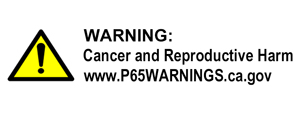By Bill Lackey, LPI Racing
Here are ten things you should know about auto racing brake pads.
1. There is a difference between street, autocross and racing brake pads
The biggest difference is the operating temperature and the overall coefficient of friction, according to Todd Miller, Product Manager for Hawk Brake Pads.
Street pads are tuned for comfort and have to work in all type weather conditions. Autocross pads are high performance pads that will stop better than a street pad, but must still work at low temperatures. Road Racing pads must work at higher temperatures, but can sacrifice some stopping ability at low temperatures. There will always be trade-offs though. Dust, rotor wear, pad wear, and noise to just name a few.
There are many different types of auto race pads.These are specific racing brake pads designed for the car and type of racing (sprint, endurance, etc).
2. There is no one "all around" racing brake pad
Every brake pad has trade-offs. The type brake pad best suited to your needs depends on the type of racing that you do.Braking Performance and abuse tolerance are the most important things to consider when selecting a pad for racing. Pads with low dust are harder and will not stop as well. High temperature Road Racing pads will not work well at low temperatures and will wear the rotors quickly when cold. When starting out many people can use all purpose pads, but as the speeds increase full racing pads will almost certainly be needed.
3. Brake pad size has a limited effect on stopping power
Just because a pad is bigger does not mean it will stop better, according to Todd Miller, Product Manager for Hawk Brake Pads.
Racing pads required heat to work best. Andreas Boehm of Pagid Brakes points out that the size of the pad is one element of how much heat it can handle. Generally, the higher the temperature helps the car stop better. Miller also points out that the rotor, pad and caliper all play a role in the overall brake system.
4. Auto racing brake pads need to be heated up to work best
Racing pads require heat because of the chemical makeup of the friction formulation. Without heating up, a racing brake pad will harm the rotor and will wear more quickly. When the rotors aren't heated up properly, they will wear quicker than normal and ring-grooving will occur. This can cause premature rotor and pad wear. Some racing pads can wear out a new set of rotors in only a few hundred street miles, but will last a full season on the track.
5. Avoid being too aggressive with the type of brake pad you select
Your tires really impact you in this area. As Boehm points out, "there are definitely too aggressive of a pad for certain applications." Safety is an issue here as well. If the bite of the pad is greater than the tire can handle, you could go into a slide by locking up the tire. Too aggressive a pad can be hard to modulate. Brake pads meant for high down force cars can be almost digital on a lightweight sports sedan.
6. Lots of factors cause racing brake pads to squeal
Noise, vibration and harshness (NVH) are engineered to different levels by different manufactures of brake pads. These factors influence the degree of squeal. The hardness of racing brake pads, the axle, calipers and rotors all impact the degree of squeal. You'll also find that material composition, physical pad design, level of coefficient friction produced and transfer film quality influence squeal.
7. Brake pads can get too hot
Getting the pad too hot can cause some ingredients in the pad to evaporate out of the material. This can cause uneven wear and noise. Some manufacturers slot or cross drill the rotors and include vents to control heat. Care should be used in making sure the pad is within its operating temperature range. Use cooling ducts or larger rotors if necessary. If the pads get too hot:
They will either "Glaze" or you can thermal shock them.
- - Glazing
- A hardening of the brake pad surface in which very little or no wear takes place
- -Work hardening / Gradual loss of Mu, NVH
- -High speed stop or brake drag / Aggressive loss of Mu, NVH
- -Thermal Shock
- A sudden burst or extended dwell time of heat energy that exceeds the brake pads thermal capacity damaging both the surface and underlying material
- -Glazing or excessive pad wear
8. You can tell if your brake pad is too aggressive
Excessive heat can be caused by using the wrong racing brake pad. You can mainly determine this through the effort needed on the brake pedal. Sometimes you have to push the pedal too far to the floor to stop the car. This causes a lot of heat and is hard on the discs. You have an aggressive pad if you need little pedal pressure. The weight of the car, down force involved, whether the car has ABS, the type of racing, and type of tire will determine the degree of aggressiveness best for you.
9. Braking harder for shorter periods of time will reduce overall heating of the brake system
Boehm says you can really notice the impact of stopping shorter and harder. There is less brake wear and lower temperatures with hard, short stopping. All brake pads have a maximum operating temperature. Make sure your stopping practices keep pad temperature within manufacturer specifications.
10. Look for continued developments with racing brake pads
Performance brake pads are going very much in the direction of ceramic, rotors too. Ceramic handles more heat, creates less brake dust and is better on the environment. Miller points out the buzz surrounding carbon and carbon sic (Siliconized carbon) brakes. Certain high end performance sports cars like Ferrari, Porsche, and Corvette) have Carbon Sic set ups as options. One thing is certain... cars are being built to go faster, which require better brakes and better performance. You'll continue to see more racing brake innovations.
Join LPI Racing on Facebook for more free tips about auto racing at www.Facebook.com/LPIRacing.









